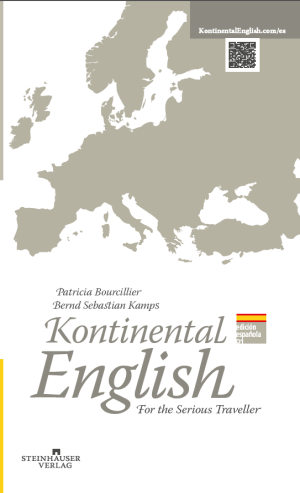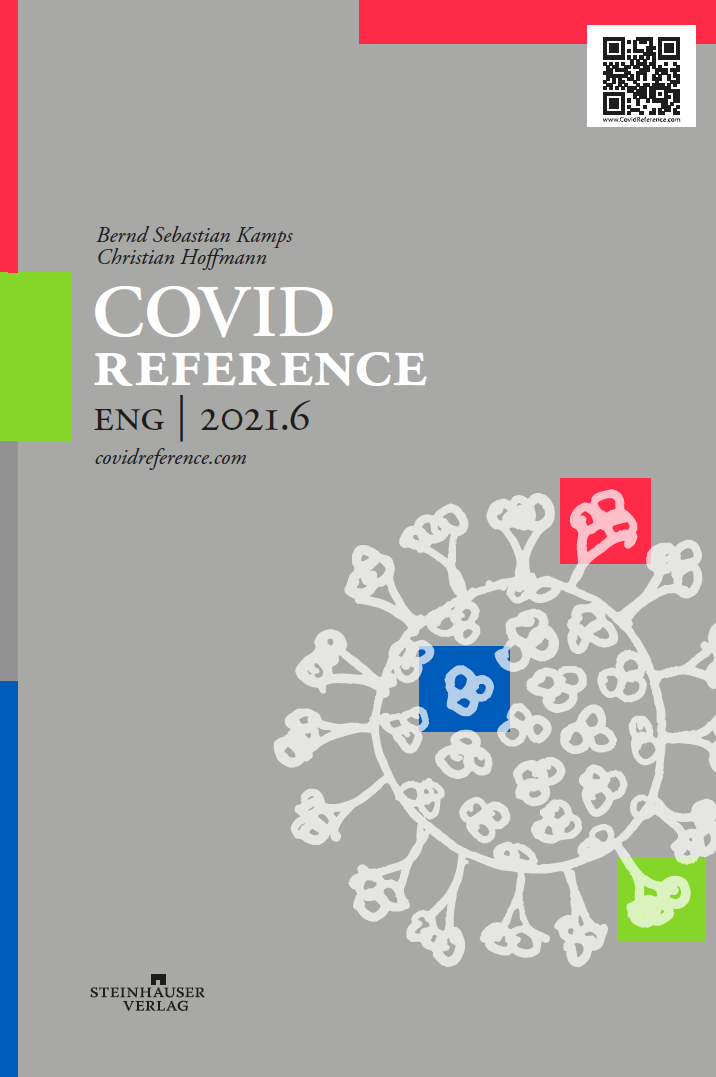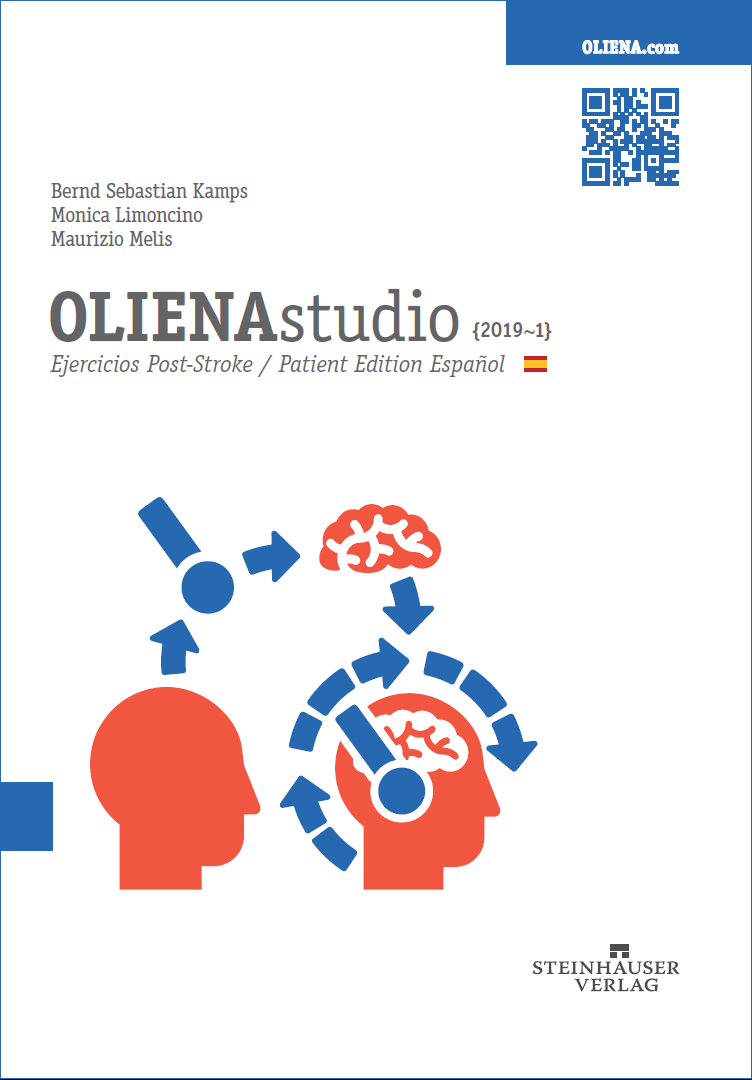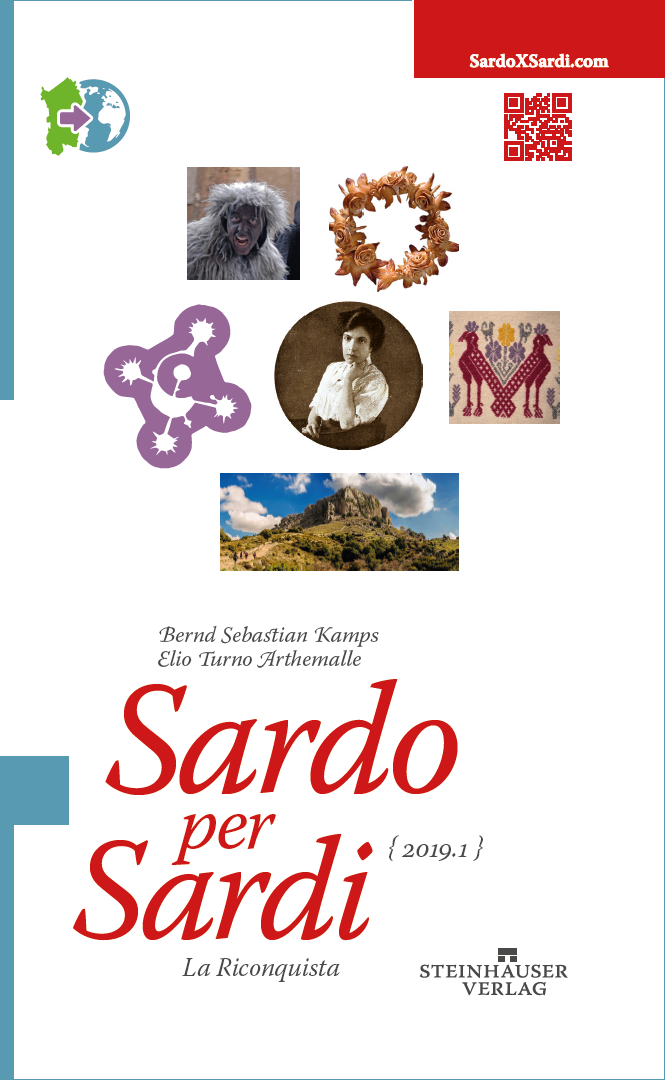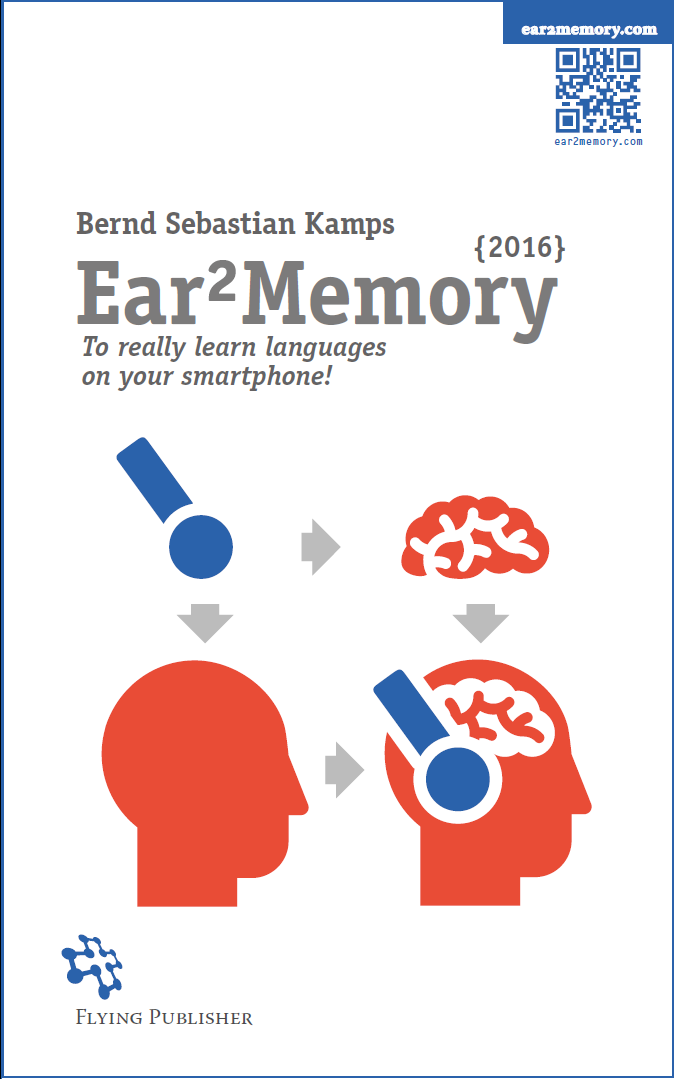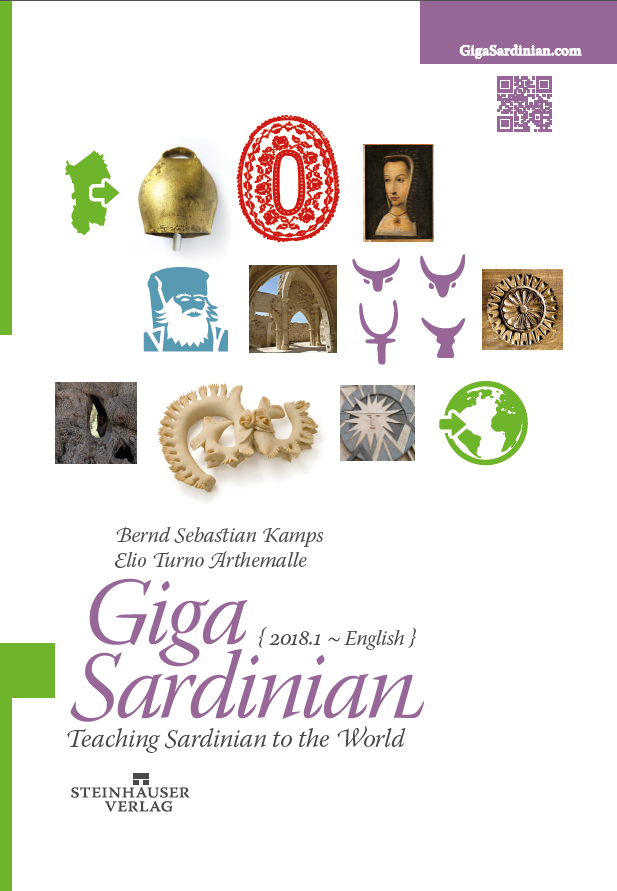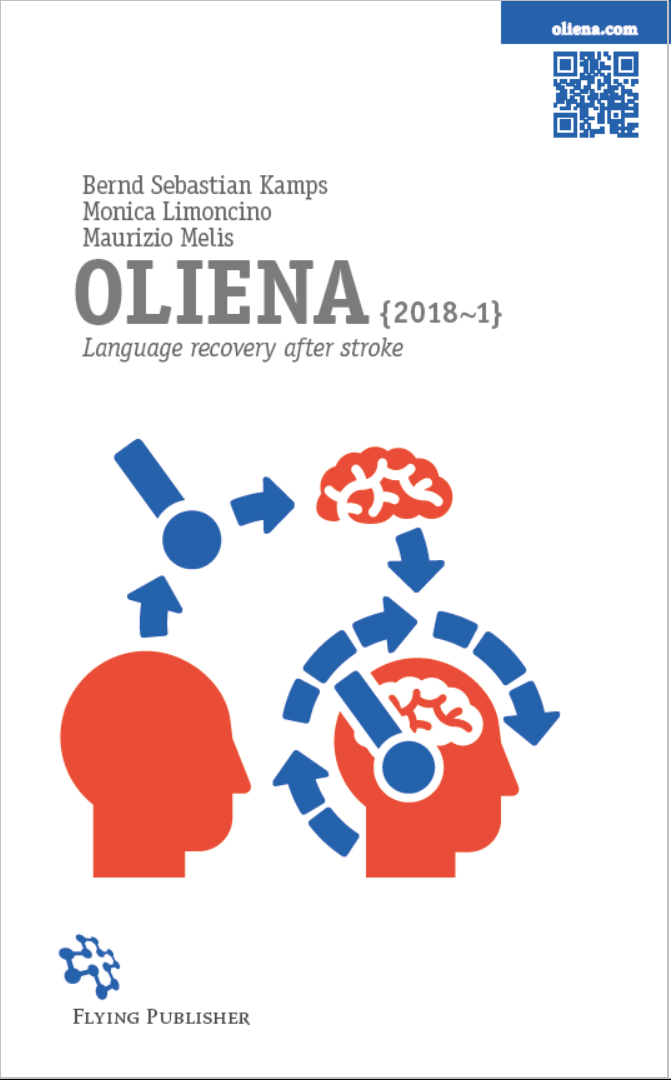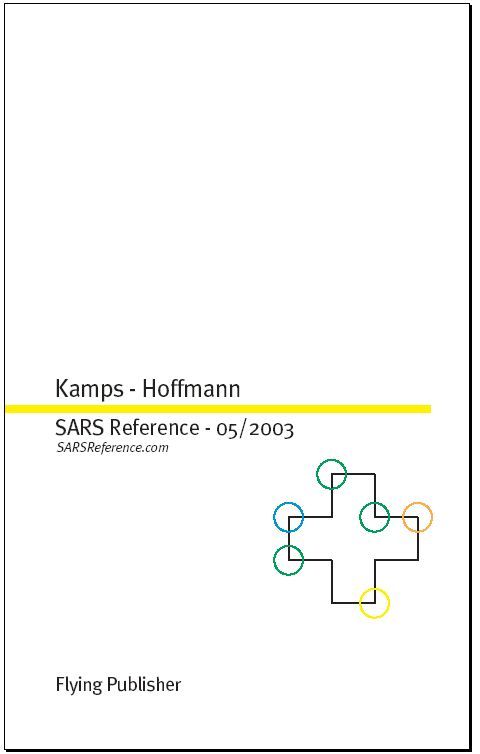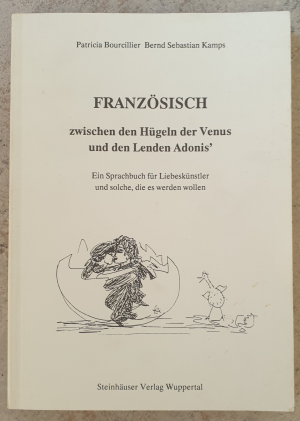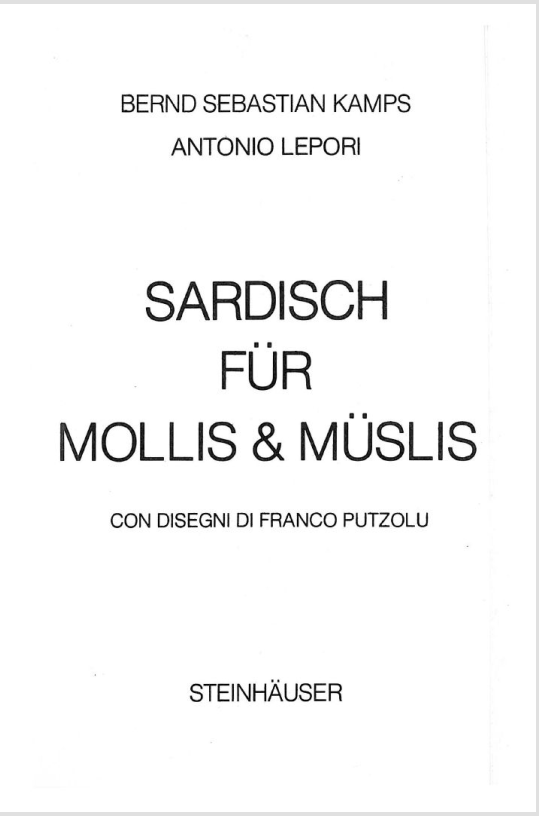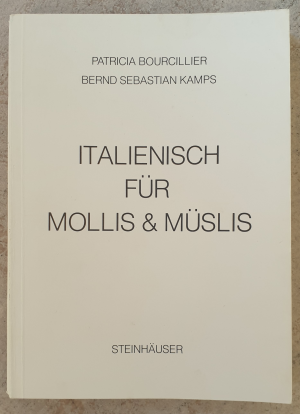If you just want basic notions of the Italian language, continue with the next episode of Giulia, Giacomo and their friends (‘A1: Love’) and Spaghetti Aglio e Olio (‘A2: Italian Cuisine’). Then go onto Level 3.
Download the audio files from www.4elisa.com to your mobile devices and read the text several times while listening to the audio and looking at the English translation. Remember that it is not a sin to listen to the audio 10, 20 or even 50 times, it may be the smartest way!
If you are still serious about learning Italian, continue with section B, ‘Action Words’, section C, ‘Words’, section D, ‘Rules’, etc. On today’s menu: the second most important Italian word, essere to be. Immediately after discovering the present (sono-sei-è | siamo-siete-sono), you will make another trip into the past, discover the so-called passato prossimo and appreciate the power of the participio passato, the past participle. Please note that the past participle is one of the key elements of Italian grammar; as such, repetition is beauty.
The rest will be easy. You’ll soon know how to say never/ever, nothing/anything, nobody/anything and no more/anymore, as well as even how to ask questions. Level 2 ends with one of the most libidinous experiences in Italy: Amos’ fruit salad!
Listen to the audios until you understand every single word.
A1: Love (2)
Normal Audio
Slow Audio
Giacomo meets Luca, one of his best friends. They discuss his recent breakup with Giulia.
| Giacomo: Ti rendi conto? Giulia mi ha lasciato. È convinta che io abbia una storia con Valeria. |
G.: You know? Giulia left me. She’s convinced that I’m having a “fling” with Valeria. |
| Luca: È assurdo! Tu eri andato a lasciare lei perché l’avevano vista con Maurizio domenica scorsa, vero? |
L.: That’s ridiculous! You were going to leave her because she’d been seen with Maurizio last Sunday, right? |
| Giacomo: Si, ma è stata più veloce di me. Ora è finita. Non ho più fiducia in lei. È tutto troppo complicato. Non siamo fatti l’uno per l’altra. |
G.: Yes, but she was faster than me. Now it’s over. I can’t trust her anymore. It’s all too complicated. We’re not meant for each other. |
| Luca: Allora vuoi finirla con lei? Sei sicuro? |
L.: So you want to break it off with her? Are you sure? |
| Giacomo: Sicurissimo. E poi non ho tempo per questo tipo di storie. La mia laurea è più importante. È fra sei settimane. |
G.: Very sure. I don’t have time for this kind of stories. My studies are more important. Exams are in 6 weeks. |
| Luca: Non vedrai Giulia neanche alla festa di Sara sabato sera? |
L.: You won’t even see Giulia at Sara’s party Saturday night? |
| Giacomo: No, tranquillo, andrò alla festa. Perché dovrei rinunciare a vedere i miei amici? Ma non guarderò Giulia e tantomeno le parlerò. |
G.: No, don’t worry, I’ll go to the party. Why should I give up seeing my friends? But I won’t look at Giulia and even less talk to her. |
Words
|
rendersi conto |
to realize |
|
ti rendi conto? |
do you realize? |
|
lasciare |
to leave |
|
essere convinto/-a |
to be convinced |
|
che io abbia (congiuntivo) |
that I have |
|
la storia |
fling; history |
|
assurdo |
absurd; ridiculous |
|
eri andato |
you had gone |
|
perché |
because; why |
|
l’avevano vista |
she had been seen |
|
domenica |
Sunday |
|
scorso/-a |
last |
|
vero? / non è vero? |
isn’t it? |
|
si |
yes |
|
è stata |
she has been |
|
veloce |
quick, fast |
|
più veloce di me |
faster than me |
|
ora |
now |
|
è finita |
it’s over |
|
avere fiducia in |
to trust |
|
tutto |
everything, all |
|
troppo |
too |
|
complicato |
complicated |
|
non siamo fatti |
we are not made |
|
l’uno per l’altra |
for each other |
|
allora |
so, in that case |
|
finirla con |
to break it off with |
|
sicuro/-a |
sure |
|
non ho tempo |
I don’t have time |
|
questo tipo di |
this kind of |
|
la mia laurea |
my studies |
|
più |
more |
|
importante |
important |
|
fra sei settimane |
in 6 weeks |
|
non vedrai |
you won’t see |
|
neanche |
not even |
|
alla festa |
at the party |
|
sabato sera |
Saturday evening |
|
tranquillo |
don’t worry |
|
andrò |
I’ll go |
|
dovrei |
I would need to |
|
rinunciare |
to give up |
|
vedere |
to see |
|
i miei amici |
my friends |
|
non guarderò |
I won’t look at |
|
tantomeno |
even less |
|
parlare |
to talk, to speak |
|
non le parlerò |
I won’t talk to her |
A2: Italian Cuisine (2)
Normal Audio
Slow Audio
Spaghetti Aglio e Olio’ is one of the Italian classics. The recipe is simple, but knowing some secrets will enhance your pleasure.
|
Per 4 persone: 400 g di spaghetti. Condimento: 3 spicchi d’aglio, 2 peperoncini, 50 ml di olio d’oliva, due cucchiai di prezzemolo tritato. |
For 4 people: 400 g spaghetti. Sauce: 3 cloves of garlic, 2 chilli peppers, 50 ml of olive oil, two tablespoons of chopped parsley. |
|
Mentre cuociono gli spaghetti (vedi Level 1), scaldare in una padella l’olio a fuoco vivo. Quando l’olio è bollente, abbassare il fuoco, aggiungere gli spicchi d’aglio e i peperoncini e cuocere per 5 minuti. |
While the noodles are cooking (see Level 1), heat the oil in a pan over high heat. When the oil is hot, lower the heat, add the garlic and chilli and cook for 5 minutes. |
|
Scolare gli spaghetti e metterli nella padella del condimento con il prezzemolo. Rigirare a fuoco lento per 2 minuti. Completare con un filo d’olio nel piatto. |
Drain the spaghetti and put it in the pan with the sauce together with the parsley. Stir over low heat for 2 minutes. Complete with a drizzle of olive oil when served. |
|
Variazione dello chef: far sfumare il condimento con un po’ di champagne; oppure: aggiungere alla fine qualche pinolo. |
Chef’s variation: soften the sauce with a little champagne; or add a few pine nuts at the end. |
Words
|
condimento |
sauce |
|
lo spicchio; pl: gli spicchi |
slice; here: clove |
|
l’aglio |
garlic |
|
il peperoncino |
chilli pepper |
|
il cucchiaio; pl: i cucchiai |
tablespoon |
|
il prezzemolo |
parsley |
|
tritato |
chopped |
|
cuocere |
to cook |
|
scaldare |
to heat |
|
a fuoco vivo |
over high heat |
|
quando |
when |
|
bollente |
boiling, very hot |
|
abbassare |
to lower |
|
il fuoco |
fire; flame |
|
aggiungere |
to add |
|
mettere |
to put |
|
nella padella |
in the pan |
|
rigirare |
to stir, to turn around |
|
a fuoco lento |
over low heat |
|
completare |
to complete |
|
un filo d’olio |
a drizzle of oil |
|
a crudo |
here: cold |
|
il piatto |
plate |
|
la variazione |
variation |
|
far sfumare |
to soften |
|
un po’ di |
a little (of) |
|
lo champagne |
champagne |
|
alla fine |
at the end |
|
qualche |
some |
|
il pinolo |
pine nut |
B. Action Words
essere to be
Essere is the second most important word in Italian. As with avere, take all the time you need to get familiar with it. First learn every form, then memorize the 6-word sequence sono-sei-è | siamo-siete-sono.
|
Singular |
|||
|
(io) |
sono |
I |
am |
|
(tu) |
sei |
you |
are |
|
(lui/lei) |
è |
he/she |
is |
|
Plural |
|||
|
(noi) |
siamo |
we |
are |
|
(voi) |
siete |
you |
are |
|
(loro) |
sono |
they |
are |
Italian words usually put the stress on the second-last syllable: avere, ragione. Only a few words put the stress on the antepenultimate syllable (the third-to-last one), for example essere. From now on, we’ll underline the stressed vowels of these words (which are called sdrucciole). Example: vivere to live, spendere to spend.
The most important word of the sono-sei-è | siamo-siete-sono sextet is è he/she/it is. In any conversation, you’ll hear è at intervals of minutes, or even seconds. Here are some common words in combination with è:
|
È bellissimo! |
That’s beautiful! |
|
Non è fantastico? |
Isn’t it fantastic? |
|
Non è qui. |
He/She is not here. |
|
È lì. |
He/She is there. |
|
Non è grave. |
It’s not serious. |
|
È completamente pazzo. |
He is completely crazy. |
|
È completamente pazza. |
She is completely crazy. |
Now take a quick look at these words:
|
felice |
happy |
|
gentile |
kind |
|
dolce |
sweet |
|
crudele |
cruel |
|
divertente |
funny |
|
superficiale |
superficial |
and combine sono-sei-è | siamo-siete-sono with them. Note that the final –e vowel of these adjectives changes to –i in the plural (when the word refers to more than one person: we, you, they): felici, gentili, dolci, crudeli, divertenti and superficiali.
|
Sono felice. |
I am happy. |
|
Sei gentile. |
You are kind. |
|
È dolce. |
He/She is sweet. |
|
Siamo crudeli. |
We are cruel. |
|
Siete divertenti. |
You are funny. |
|
Sono superficiali. |
They are superficial. |
By combining sono-sei-è | siamo-siete-sono with felice etc., you get thirty-six new two-word sentences. Now add non and increase your repertoire to 216:
|
Non sono felice. |
I am not happy. |
|
Non sei gentile. |
You are not kind. |
|
Non è dolce. |
He/She is not sweet. |
|
Non siamo crudeli. |
We are not cruel. |
|
Non siete divertenti. |
You are not funny. |
|
Non sono superficiali. |
They are not superficial. |
Finally, take a first look at the all-important c’è | ci sono there is | there are and its variations in time:
|
Presente |
|
|
c’è |
there is |
|
ci sono |
there are |
|
Imperfetto |
|
|
c’era |
there was/used to be |
|
c’erano |
there were/used to be |
|
Passato prossimo |
|
|
c’è stato/stata |
there was |
|
ci sono stati/state |
there were |
|
Futuro |
|
|
ci sarà |
there will be (sing.) |
|
ci saranno |
there will be (pl.) |
|
Condizionale presente |
|
|
ci sarebbe |
there would be (sing.) |
|
ci sarebbero |
there would be (pl.) |
We’ll come back to essere in Level 4.
Avere: Passato prossimo
Back to avere and back to the past: in a 10-minute dialogue, you will hear the single elements of the avere sextet ho-hai-ha | abbiamo-avete-hanno dozens of times. Most often, they appear in combination with so-called past participles. Past participles (now shown in blue) are, for example, done, said, worked, in Italian fatto, detto, lavorato. Coupled with avere, they form the passato prossimo, one of the Italian tenses to express the past. Like the imperfetto, it is usually translated by the English imperfect tense. Look how the passato prossimo fits into your timeline, occupying the same time slot as the imperfetto. You’ll discover later on the differences between the two.

To get the past participles of Italian action words, you normally just change their endings. For the biggest group of action words, the first group, those ending in –are, just cut the –are and add –ato. Some examples:
|
Infinitive |
Root |
Past participle |
||
|
to love |
amare |
am- |
amato |
loved |
|
to excuse |
scusare |
scus- |
scusato |
excused |
|
to hope |
sperare |
sper- |
sperato |
hoped |
For the second group of action words, those ending in –ere, cut –ere and add –uto:
|
Infinitive |
Root |
Past participle |
||
|
to believe |
credere |
cred- |
creduto |
believed |
|
to be able to |
potere |
pot- |
potuto |
been able to |
|
to know |
sapere |
sap- |
saputo |
known |
And, finally, for the third group of action words, those ending in –ire, cut –ire and add –ito:
|
Infinitive |
Root |
Past participle |
||
|
to feel |
sentire |
sent- |
sentito |
felt |
|
to understand |
capire |
cap- |
capito |
understood |
|
to sleep |
dormire |
dorm- |
dormito |
slept |
Once you have the past participle, you can build the passato prossimo:
|
(io) |
ho |
amato |
I |
loved |
|
(tu) |
hai |
amato |
you |
loved |
|
(lui/lei) |
ha |
amato |
he/she |
loved |
|
(noi) |
abbiamo |
amato |
we |
loved |
|
(voi) |
avete |
amato |
you |
loved |
|
(loro) |
hanno |
amato |
they |
loved |
The following list shows you the past participles of 10 frequent action words. Combine ho-hai-ha | abbiamo-avete-hanno + a past participle and you get the passato prossimo. Only a few past participles are irregular.
|
Infinito |
Passato prossimo |
||
|
avere |
to have |
ho avuto |
I had |
|
fare |
to make, to do |
ho fatto* |
I made, I did |
|
dire |
to say |
ho detto* |
I said |
|
vedere |
to see |
ho visto* |
I saw |
|
dovere |
to have to, must |
ho dovuto |
I had to, I must |
|
volere |
to want |
ho voluto |
I wanted |
|
potere |
can, to be able to |
ho potuto |
I could, I was able to |
|
credere |
to believe |
ho creduto |
I believed |
|
parlare |
to speak, to talk |
ho parlato |
I spoke, I talked |
|
sapere |
to know |
ho saputo |
I knew |
|
* Irregular past participle |
|||
Ho avuto
Now take one action word at a time and build your sextet:
| avere to have | |||
|
(io) |
ho avuto |
I |
had |
|
(tu) |
hai avuto |
you |
had |
|
(lui/lei) |
ha avuto |
he/she |
had |
|
(noi) |
abbiamo avuto |
we |
had |
|
(voi) |
avete avuto |
you |
had |
|
(loro) |
hanno avuto |
they |
had |
Combine ho avuto, etc. with tempo, fame, sete, ragione, paura, freddo:
|
(io) |
Ho avuto tempo. |
I had time. |
|
(tu) |
Hai avuto fame. |
You were hungry. |
|
(lui/lei) |
Ha avuto sete. |
He/She was thirsty. |
|
(noi) |
Abbiamo avuto ragione. |
We were right. |
|
(voi) |
Avete avuto paura. |
You were afraid. |
|
(loro) |
Hanno avuto freddo. |
They were cold. |
Ho fatto
| fare to do | |||
|
(io) |
ho fatto |
I |
did |
|
(tu) |
hai fatto |
you |
did |
|
(lui/lei) |
ha fatto |
he/she |
did |
|
(noi) |
abbiamo fatto |
we |
did |
|
(voi) |
avete fatto |
you |
did |
|
(loro) |
hanno fatto |
they |
did |
Now combine ho fatto, etc. with una stupidaggine, un errore, un sogno, errori, una scelta, una risonanza magnetica:
|
(io) |
Ho fatto una stupidaggine. |
I did a silly thing. |
|
|
(tu) |
Hai fatto un errore. |
You made a mistake. |
|
|
(lui/lei) |
Ha fatto un sogno. |
He/She had a dream. |
|
|
(noi) |
Abbiamo fatto errori. |
We made mistakes. |
|
|
(voi) |
Avete fatto una scelta. |
You made a choice. |
|
|
(loro) |
Hanno fatto una risonanza magnetica. |
They did an MRI. |
Ho detto
| dire to say | |||
|
(io) |
ho detto |
I |
said |
|
(tu) |
hai detto |
you |
said |
|
(lui/lei) |
ha detto |
he/she |
said |
|
(noi) |
abbiamo detto |
we |
said |
|
(voi) |
avete detto |
you |
said |
|
(loro) |
hanno detto |
they |
said |
Now combine ho detto, etc. with di sì, di no, una bugia, una stupidaggine, una cazzata, una sola parola:
|
(io) |
Ho detto di sì. |
I said yes. |
|
|
(tu) |
Hai detto di no. |
You said no. |
|
|
(lui/lei) |
Ha detto una bugia. |
He/She told a lie. |
|
|
(noi) |
Abbiamo detto una stupidaggine. |
We said something stupid. |
|
|
(voi) |
Avete detto una cazzata (vulgar). |
You said bullshit. |
|
|
(loro) |
Hanno detto una sola parola. |
They said a single word. |
Ho visto
| vedere to see | |||
|
(io) |
ho visto |
I |
saw |
|
(tu) |
hai visto |
you |
saw |
|
(lui/lei) |
ha visto |
he/she |
saw |
|
(noi) |
abbiamo visto |
we |
saw |
|
(voi) |
avete visto |
you |
saw |
|
(loro) |
hanno visto |
they |
saw |
Now combine ho visto, etc. with il ragazzo, la ragazza, la tigre, i due ragazzi, le due ragazze, il drago:
|
(io) |
Ho visto il ragazzo. |
I saw the boy. |
|
|
(tu) |
Hai visto la ragazza. |
You saw the girl. |
|
|
(lui/lei) |
Ha visto la tigre. |
He/She saw the tiger. |
|
|
(noi) |
Abbiamo visto i due ragazzi. |
We saw the two boys. |
|
|
(voi) |
Avete visto le due ragazze. |
You saw the two girls. |
|
|
(loro) |
Hanno visto il drago. |
They saw the dragon. |
To complete Section A, please take a sheet of paper and develop the sextets for volere, dovere, potere, credere, parlare and sapere. Examples:
ho voluto-hai voluto-ha voluto | abbiamo voluto-avete voluto– hanno voluto
ho potuto-hai potuto-ha potuto | abbiamo potuto-avete potuto– hanno potuto
Important note! We said earlier that the passato prossimo is the equivalent of the English imperfect tense (I loved, I studied, I worked). Alas, this is true only in part. Actually, in addition to the passato prossimo, you’ll need also the imperfetto. We’ll find out more about that in Level 8.
Second Important note! The past participle is a key element in Italian grammar. Would you repeat past participle 7 times, please? Past participle needs to be as familiar to you as milk, bread and butter.
Fare + andare
Some action words have an irregular present tense. It is important to know the ones that are frequently used. Today, let’s start with fare to do/make and andare to go.
| fare to do/make I do, etc. |
andare to go I go, etc. |
||
|
io |
faccio |
vado |
I |
|
tu |
fai |
vai |
you |
|
lui/lei |
fa |
va |
he/she |
|
noi |
facciamo |
andiamo |
we |
|
voi |
fate |
andate |
you |
|
loro |
fanno |
vanno |
they |
C. Words
Technology
Some words, in particular those referring to current technology gadgets, should be familiar to you. Note the slightly different pronunciation.
|
l’internet |
|
lo smartphone |
|
la sim |
|
il tablet |
|
il computer |
|
il mouse |
|
l’account |
Preview
In Level 3, you will find these words; please take a glance at them:
|
poco |
little |
|
poco da fare |
little to do |
|
Natale |
Christmas |
|
sicuramente |
certainly |
|
nuovo |
new |
|
molto |
much |
|
un’idea |
an idea |
|
può darsi |
maybe |
|
per lei |
for her |
|
brutto |
ugly; bad |
|
avere un brutto carattere |
to be bad-tempered |
|
amare |
to love |
|
sperare |
to hope |
|
studiare |
to study |
|
sapere |
to know |
|
credere |
to believe |
|
capire |
to understand |
|
dormire |
to sleep |
|
piccolo |
small |
|
una macchina |
a car |
|
un ragazzo |
a boy, young man |
|
simpatico |
nice, pleasant |
|
una ragazza |
a girl, young woman |
|
giovane |
young |
|
grande |
big |
|
una casa |
a house |
|
un lavoro |
a job |
|
prestigioso |
prestigious |
|
ancora |
still |
|
i nonni |
the grandparents |
|
una borsa di studio |
a scholarship |
|
un mestiere |
a profession |
|
immenso |
huge |
|
un successo |
a success |
|
un figlio |
a son |
|
una figlia |
a daughter |
|
solo |
only |
|
una vacanza |
a vacation |
|
breve |
short |
|
il capo |
a boss |
|
interessante |
interesting |
|
un successone |
a huge success |
|
un problema |
a problem |
|
meglio |
better |
|
proprio |
here: really, exactly |
|
una sfiga (colloquial) |
bad luck |
|
le palle (vulgar) |
the balls |
D. Rules
Negatives (2)
In Level 1, you used non to negate the meaning of a sentence. Now extend your knowledge to never/ever, nothing/anything, nobody/anything and no more/anymore. The procedure is simple: Keep the non in front of the action word and place mai, niente, nessuno and più after it.
| Non ti amo. |
I don’t love you. |
| Non lavora mai. |
He/She never works. |
| Non sa niente. |
He/She knows nothing. |
| Non vedete nessuno. |
You don’t see anybody. |
| Non mi ami più. |
You don’t love me anymore. |
| Non lo facciamo mai più. |
We won’t do it again (“never anymore”). |
In synthesis:
|
non |
not |
|
non … mai |
never / ever |
|
non … niente |
nothing / anything |
|
non … nessuno |
nobody / anybody |
|
non … più |
no more / anymore |
|
non … mai più |
never again / ever again |
|
non … più niente |
nothing again / anything again |
|
non … più nessuno |
nobody again / anybody again |
Things are slightly more complicated with compound tenses. With compound tenses such as the passato prossimo (avere + past participle, i.e., ho lavorato), non goes before the avere forms (and any optional personal pronoun mi, ti, lo, la, l’ etc.; more about personal pronouns in Level 6):
| Non ho sentito. |
I didn’t hear. |
| Non ti ho amato. |
I didn’t love you. |
Where will you place mai and più? In the presence of a past participle, mai and più go after avere and before the past participle:
| Non ha mai lavorato. |
He/She has never worked. |
| Non mi hai più aiutato. |
You haven’t helped me anymore. |
| Non l’abbiamo mai più fatto. |
We didn’t do it ever again (“never anymore”). |
And where to place niente and nessuno? They always go after the past participle:
| Non ha saputo niente. |
He/She didn’t know anything. |
| Non avete visto nessuno? |
Didn’t you see anybody? |
These sentences sound complicated, right? Indeed, they do, but don’t worry. Eventually, after only weeks, you will become comfortable with them.
Asking a question
When you ask a question in English, you usually add do/did at the beginning of the sentence: Do you see this? Did you do this? In Italian, you don’t need anything of the kind. To transform the statement into a question, you just raise the pitch of your voice at the end of the sentence:
| Statement: Mi hai baciato. |
You kissed me. |
| Question: Mi hai baciato? |
Did you kiss me? |
| Statement: È arrivato solo adesso. |
He’s come only now. |
| Question: È arrivato solo adesso? |
Has he come only now? |
See also these examples:
| Non ti amo? |
Don’t I love you? |
|
| Non lavora mai? |
Doesn’t he ever work? |
|
| Non sa niente? |
Doesn’t he know anything? |
|
| Non vedete nessuno? |
Don’t you see anybody? |
|
| Non mi ami più? |
Don’t you love me anymore? |
|
| Non lo facciamo mai più? |
Won’t we ever do it again? |
|
E. Dialogue
Normal Speed
Slow Speed
| – Guarda la bella frutta che ha il signor Gianni. Sembra freschissima. | – Look at the beautiful fruit that Mr. Gianni has. It seems very fresh. |
| – Davvero! Senti solo le fragole… | – You’re right! Just smell the strawberries! |
| – Facciamo una macedonia! | – Let’s make a fruit salad! |
| – Ottima idea! Quale frutta compriamo? | – Great idea! What fruit shall we buy? |
| – Seguiamo la ricetta di Amos: due pezzi di tutto, frutta piccola, ananas e pinoli – e per finire, succo di arancia e limone a volontà. | – Let’s follow Amos’ recipe: two pieces of everything, small fruit, pineapple and pine nuts – and finally, orange juice and lemon to taste. |
| – Cioè? | – Say that again? |
| – Due mele, due pere, due banane, due kiwi e mezzo ananas, una piccola bustina di pinoli e 250 grammi di susine, d’uva e di albicocche. | – Two apples, two pears, two bananas, two kiwis and half a pineapple, a small packet of pine nuts and 250 grams of plums, grapes and apricots. |
| – E le fragole? | – And strawberries? |
| – Certo, anche le fragole. Evito solo melone e anguria – il melone perché ha un gusto molto forte e l’anguria perché è troppo acquosa. Tagliamo la frutta a pezzettini, la mescoliamo con quattro cucchiai di zucchero e mettiamo tutto nel frigorifero per trenta minuti. Alla fine, aggiungiamo il succo di quattro arance e di tre limoni e serviamo la macedonia con un gelato alla crema. Signor Gianni… | – Of course, also strawberries. I usually avoid putting in melon and watermelon – the melon because it has a very strong taste and the watermelon because it is too watery. We’ll cut the fruit into small pieces, mix it with four tablespoons of sugar and put everything in the fridge for thirty minutes. After that, we’ll add the juice of four oranges and three lemons and serve the fruit salad with vanilla ice cream. Mr. Gianni… |
| – Buongiorno, Signorina Elisa. Che cosa desidera? | – Good morning, Miss Elisa. What would you like? |
| – Salve. Vorrei preparare una bella macedonia. Ci servono due mele, due pere, due banane, una bustina di pinoli, 4 arance, 3 limoni… | – Hello. I would like to prepare a nice fruit salad. We need two apples, two pears, two bananas, a bag of pine nuts, 4 oranges, 3 lemons… |
Words
|
la macedonia |
fruit salad |
|
di |
of |
|
guarda! |
look! |
|
che |
which, that |
|
il signor Gianni |
Mr. Gianni |
|
sembra |
it seems |
|
fresco/-a |
fresh |
|
freschissimo/-a |
very/so fresh |
|
davvero |
indeed / really / you’re right |
|
senti! |
smell! |
|
solo |
only, just |
|
il profumo |
fragrance, scent |
|
la fragola; |
strawberry |
|
facciamo |
we make; let’s make |
| ottimo/-a |
great |
|
l’idea |
idea |
|
quale |
what, which |
|
la frutta |
fruit |
|
compriamo |
we buy / let’s buy |
|
seguiamo |
we follow / let’s follow |
|
la ricetta |
recipe |
|
due |
two |
|
il pezzo; |
piece |
|
tutto |
all, everything |
|
piccolo/-a |
small |
|
l’ananas (m.) |
pineapple |
|
e |
and |
|
il pinolo; |
pine nut |
|
per finire |
finally |
|
il succo |
juice |
|
l’arancia |
orange |
|
il limone |
lemon |
|
a volontà |
to taste; at will |
|
cioè? |
say that again! |
|
la mela |
apple |
|
la pera |
pear |
|
la banana |
banana |
|
il kiwi |
kiwi |
|
mezzo |
half |
|
uno, una |
a |
|
la bustina |
small packet |
|
il grammo |
gram |
|
la susina |
plum |
|
l’uva |
grape |
|
l’albicocca |
apricot |
|
certo |
of course |
|
anche |
also |
|
evito |
I avoid |
|
il melone |
melon |
|
l’anguria |
watermelon |
|
perché |
because |
|
il gusto |
taste |
|
molto |
very |
|
forte |
strong |
|
troppo |
too |
|
acquoso/-a |
watery |
|
tagliamo |
we cut |
|
a pezzettini |
into small pieces |
|
mescoliamo |
we mix |
|
con |
with |
|
quattro |
four |
|
il cucchiaio; |
tablespoon |
|
mettiamo |
we put |
|
il frigorifero |
fridge |
|
nel frigorifero |
in/into the fridge |
|
il minuto |
minute |
|
per trenta minuti |
for 30 minutes |
|
la fine |
end |
|
alla fine |
at the end |
|
aggiungiamo |
we add |
|
tre |
three |
|
serviamo |
we serve |
|
il gelato |
ice cream |
|
un gelato alla crema |
a vanilla ice cream |
|
la signorina |
young lady |
|
che cosa? |
what? |
|
desidera? |
what do you desire? |
|
vorrei |
I would like |
|
preparare |
to prepare |
|
bello/-a |
we need |
|
ci servono |
we need |
F. Results & Preview
That’s it for Level 2. Do you remember all the words we shared with you? And can you say sono-sei-è | siamo-siete-sono?
Do you remember
avere – ho avuto
fare – ho fatto
dire – ho detto
vedere – ho visto
volere – ho voluto
dovere – ho dovuto
potere – ho potuto
credere – ho creduto
parlare – ho parlato
sapere – ho saputo
Do you know the meaning of mai, niente, nessuno and più? And, most importantly: Will you remember Amos’ fruit salad recipe forever?
Well then, you have been promoted to Level 3!
* * *
In Level 3, you’ll find the third and last part of the action word avere. Be prepared for the worst because the complete picture of one single Italian action word is shocking, at least at the beginning. There’s one piece of reassuring news, though: we won’t ask you to learn everything we show you.
Are you ready for Level 3? Fasten your seatbelt!

